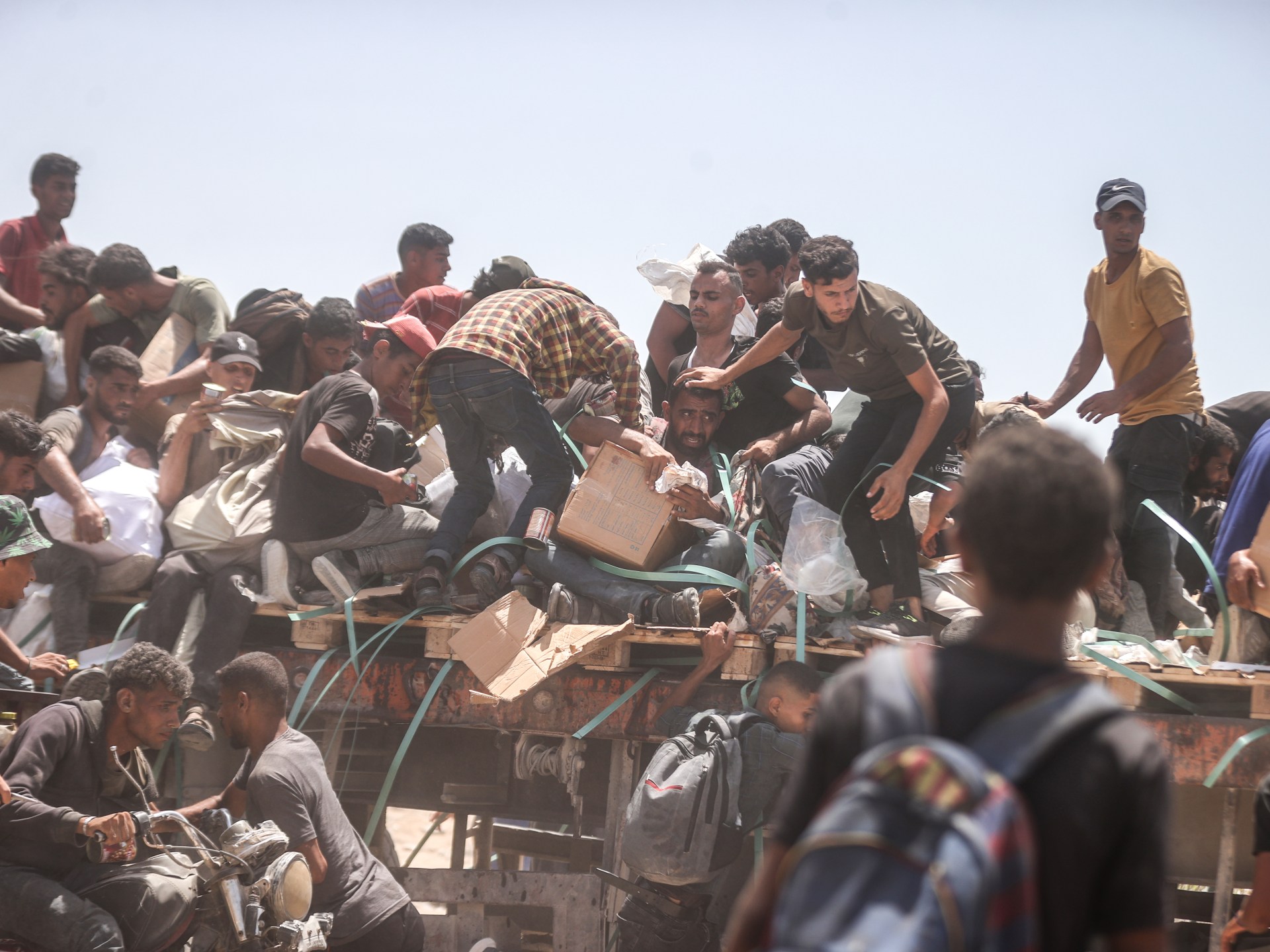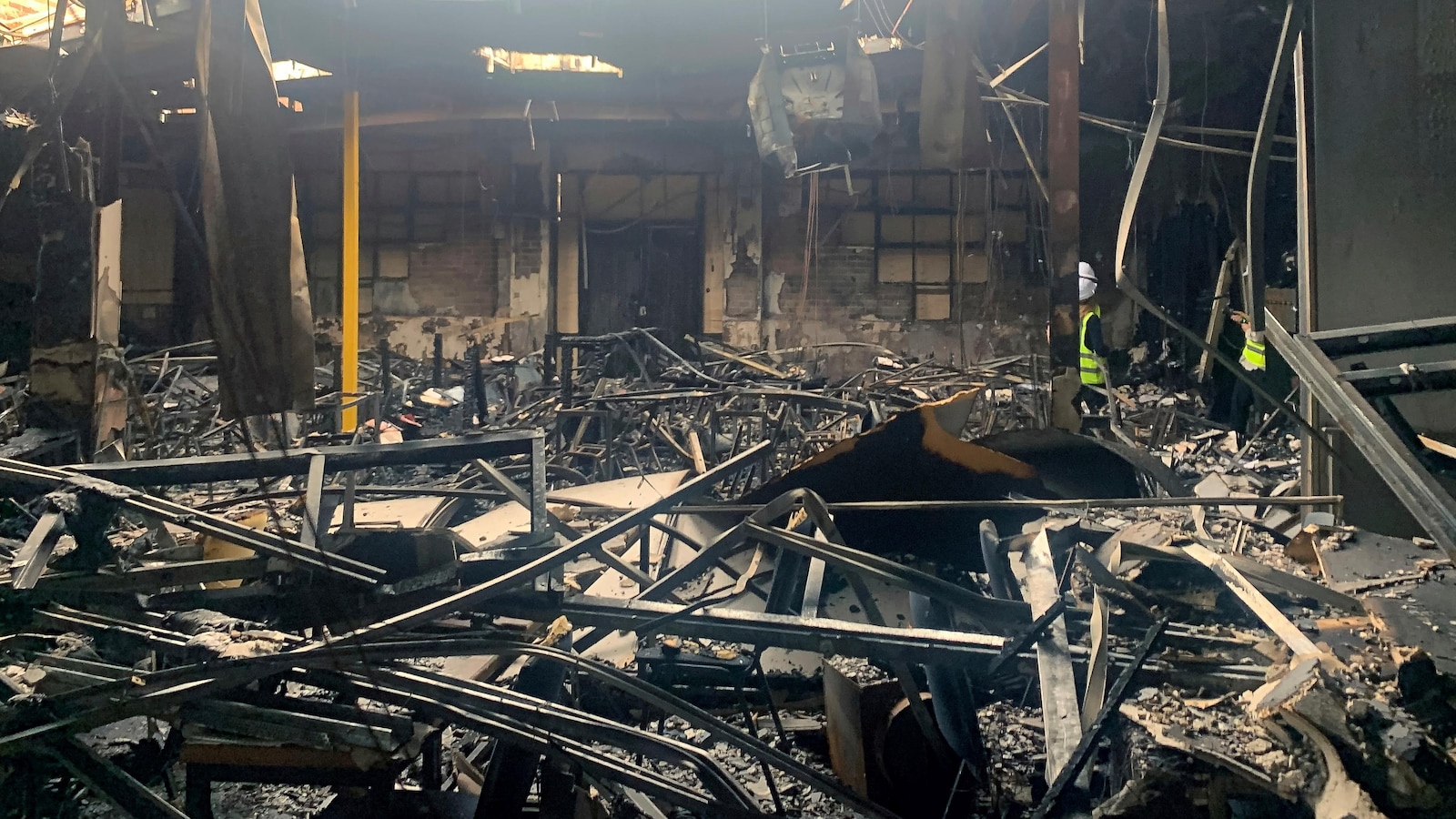On the morning of June 25, the crackling sound of machinegun fire startled Hamisa and her family as they were having breakfast in Sudan’s North Kordofan state.
The paramilitary Rapid Support Forces (RSF) had just stormed her village, Kazkeel, on motorbikes, as they burned huts and farms and fired artillery at women and children fleeing for their lives.
Hamisa, 60, fled with her seven teenage children, siblings and mother. As they made a run for it, she saw young men from her village picking up guns to confront the RSF.
They were outgunned and outnumbered.
“While we were escaping, we saw the [RSF] kill six young men in front of us,” she told Al Jazeera, solemnly.
“The entire village escaped when the RSF arrived. We left with nothing but the clothes on our backs until we reached the nearest, safest village,” she added.
An epicentre of conflict
Sudan’s regular army, known as the Sudanese Armed Forces (SAF), has fought a bloody civil war against the paramilitary Rapid Support Forces (RSF) since April 2023.
The conflict produced the worst humanitarian crisis in the world by most measures before the RSF’s recent attacks in North Kordofan, a strategic region in southern Sudan.
Over the last several weeks, the RSF has raided villages and scorched families to death. They have also shot and killed pregnant women and children, according to the Emergency Lawyers, a local monitor.
The violence has pushed tens of thousands of people to seek refuge in SAF-controlled el-Obeid, the capital of North Kordofan.
Hamisa and her family are struggling to survive after reaching the city on July 15. Like most displaced people, she is living in an overcrowded hut with barely enough food and clean water.
In addition, those displaced fear the RSF is trying to reimpose a siege on el-Obeid and then invade the city, a concern shared by analysts and relief workers.
“People all around us are still traumatised by the RSF. The children with us are very scared. They think the RSF will enter [el-Obeid],” Hamisa told Al Jazeera.
A siege would exacerbate the already catastrophic humanitarian crisis in el-Obeid and eliminate a key SAF logistics hub.
The SAF relies on el-Obeid to carry out air strikes against the RSF in the western region of Darfur, as well as to keep RSF fighters a safe distance away from the capital Khartoum, according to Nathaniel Raymond, who follows conflict dynamics in Sudan as head of the Humanitarian Research Lab at the Yale School of Public Health.
“If SAF loses el-Obeid … they would lose a lot of their ability to project force outside of Khartoum,” he told Al Jazeera.

Strategic hub
Back in February, the SAF managed to break the RSF’s chokehold siege over el-Obeid, providing much-needed relief to its units and fighters.
El-Obeid is located some 529 kilometres (329 miles) from North Darfur’s capital el-Fasher, where SAF forces and hundreds of thousands of civilians are currently besieged by the RSF.
Any hope of carrying out a rescue mission to break the siege requires that the SAF maintain control over el-Obeid, explained Raymond.
He added that holding on to the city would also protect Khartoum from being overwhelmed by RSF drone strikes.
Yet the looming onset of Sudan’s rainy season – accompanied by heavy fog and preceding heavy rainfall – could give the RSF an opportunity to mount a major assault. The rainy season is arriving in Sudan late this year, but forecasts suggest it could start in the coming days or weeks, said Raymond.
“SAF pilots look out the window of their planes [when dropping bombs]. They do not have laser guidance [because they fly old planes]. When the clouds come, it’ll be an operational advantage for the RSF,” Raymond told Al Jazeera.
“[The start of the rainy season] is the sweet spot,” he added. “The roads aren’t saturated yet and the valleys aren’t full [of rain], so the RSF will have cloud cover without any impact on their manoeuvrability.”

Any attack on el-Obeid would be catastrophic for the roughly 137,000 people seeking refuge in the city, a figure disclosed to Al Jazeera by Emmanuel Ufot, the director of Emergency Programs in North Sudan for Mercy Corps, one of the few global relief agencies active in North Kordofan.
He added that civilians would have to flee to Kosti in White Nile state if the RSF attacks el-Obeid, since all other exit points would be besieged and closed off.
Kosti is about 265 kilometres (165 miles) away from el-Obeid.
“We have to factor in the women, babies, elderly and disabled. These are people that will not be able to run when there is a lot of conflict,” Ufot told Al Jazeera.
No safe haven
Another pressing concern is the severe lack of humanitarian relief for civilians, according to relief workers.
Ufot from Mercy Corps said that only about 5 percent of the displaced in el-Obeid have a sturdy roof over their head because they are taking shelter in a school.
The rest live in huts or without any shelter at all.
With the rainy season coming, flooding and overcrowding could lead to the rapid spread of preventable diseases like cholera, a waterborne illness that has already infected tens of thousands of people in Sudan. Children are particularly vulnerable to cholera.
The RSF is compounding the crisis by firing drones and heavy artillery at civilian targets such as homes, basic services – like power stations, and hospitals, according to Yousef Hederby, a local volunteer.
“El-Obeid is subjected to a lot of artillery shelling [from the RSF]. And the shelling hits civilian homes and residential areas,” Hederby told Al Jazeera.
He added that four people were killed and some 20 were injured by the indiscriminate shelling in mid-July. He noted the violence came after the RSF killed more than 300 people in villages located near el-Obeid in North Kordofan between July 12 and July 15.
Al Jazeera sent written questions to the RSF’s press office asking the group to respond to credible reports that it has intentionally targeted civilians and carried out mass killings in recent weeks.
The RSF did not respond before publication.
Hamisa, the elderly woman who already survived one mass killing, fears she will not survive a second if the RSF enters el-Obeid.
She told Al Jazeera that the ongoing war in Sudan is worse than the civil war in the 1990s, referring to the north-south conflict that eventually divided Sudan into two countries in 2011.
“There were limits to the civil war in the 1990s. Our village wasn’t in a lot of danger at the time,” she told Al Jazeera.
“But this war has spread to every village and area in Sudan. There is a safe place in Kordofan,” she added.
“We are all very scared.”




Leave a Comment